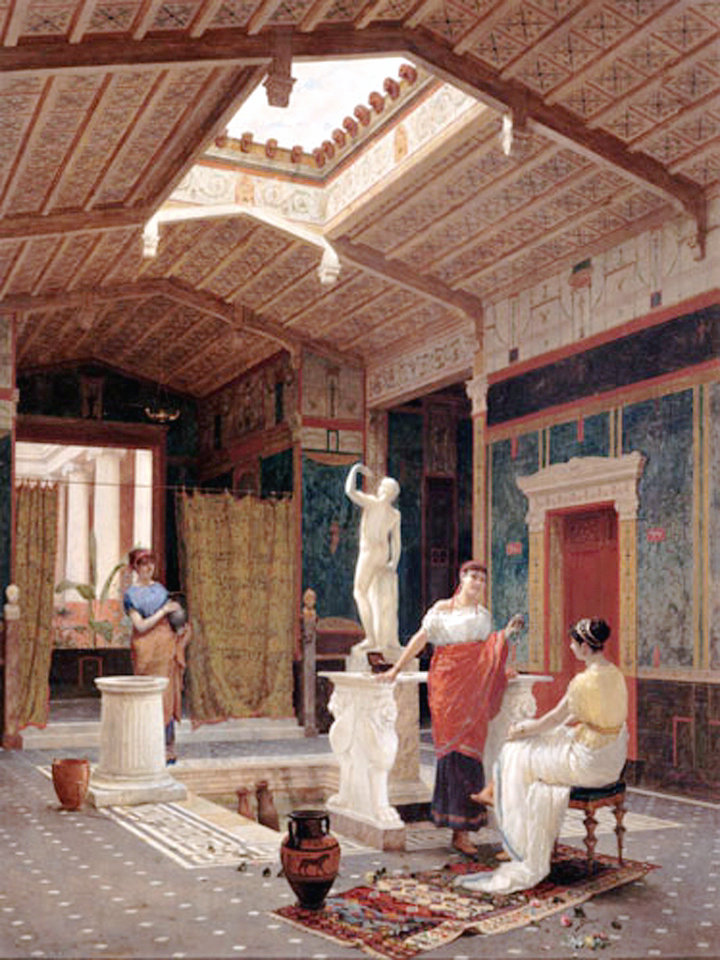In architecture, an atrium (plural: atria or atriums) is a large open air or skylight covered space surrounded by a building. Atria were a common feature in Ancient Roman dwellings, providing light and ventilation to the interior. Modern atria, as developed in the late 19th and 20th centuries, are often several stories high and having a glazed roof or large windows, and often located immediately beyond the main entrance doors (in the lobby).
Atria are a popular design feature because they give their buildings a “feeling of space and light.” The atrium has become a key feature of many buildings in recent years. Atria are popular with building users, building designers and building developers. Users like atria because they create a dynamic and stimulating interior that provides shelter from the external environment while maintaining a visual link with that environment. Designers enjoy the opportunity to create new types of spaces in buildings, and developers see atria as prestigious amenities that can increase commercial value and appeal. Fire control is an important aspect of contemporary atrium design due to criticism that poorly designed atria could allow fire to spread to a building’s upper stories more quickly. Another downside to incorporating an atrium is that it typically creates unused vertical space which could otherwise be occupied by additional floors.
Ancient atria
The Latin word atrium referred to the open central court from which enclosed rooms led off, in the type of large ancient Roman house known as a domus. The impluvium was a shallow pool sunken into the floor to catch rainwater from the roof. Some surviving examples are beautifully decorated. The opening in the ceiling above the pool (compluvium) called for some means of support for the roof, and it is here where one differentiates between five different styles of atrium. As the centrepiece of the house, the atrium was the most lavishly-furnished room. Also, it contained the little chapel to the ancestral spirits (lararium), the household safe (arca) and sometimes a bust of the master of the house.
The term was also used for a variety of spaces in public and religious buildings, mostly forms of arcaded courtyards, larger versions of the domestic spaces. Byzantine churches were often entered through such a space (as are many mosques, though the term atrium is not usually used to describe Islamic architecture).
Designs
Vitruvius names a total of five types, whereby these can be divided into atriums with and without roof opening. As an atrium without opening, probably the older design, is the atrium testudinatum – probably from the Latin word for tortoise testudo – lead. The other four forms are atria with an opening; they differ in the type of construction.
In the unsupported construction called by Vitruvius (6, 3, 1) as atrium tuscanicum (Etruscan atrium), the roof is supported by two solid wooden beams, on which are transversely two more beams embedded. This resulted in an upwardly partially open interior, whose roof was supported by columns or pillars. The atrium with only four columns becomes atrium tetrastylicum (four-columned atrium), the atrium with an opening carried by many columns is called atrium corinthicum (Corinthian atrium).
The most widespread, despite the expensive beam construction, was the atrium tuscanicum, because it allowed a clear view from the entrance to the tablinum or later into the peristyle.
Roofing
The roof was usually formed in the form of atrium impluviatum with sloping roof slope. Under the resulting rectangular roof opening, the Compluvium, was also a rectangular water basin, the Impluvium, which was used to collect the rainwater passed into a cistern. If the atrium was not used to collect rainwater at the same time, the roof could also be tilted outwards; in this case it is called atrium displuviatum. According to Vitruvius, this had the disadvantage that the vertical gutters (lat. Fistula) were often unable to absorb the rainwater from the horizontal gutters (Latin canalis) quickly enough, so that the water flowed down the walls, which were thus damaged.
There were also completely covered atria in small houses without a Compluvium, these were called atrium testudinatum.
19th century: Glazed atrium
The 19th century brought the industrial revolution with great advances in iron and glass manufacturing techniques. Courtyards could then have horizontal glazing overhead, eliminating some of the weather elements from the space and giving birth to the modern atrium.
Modern-day atria
One of the main public spaces at Federation Square, in Melbourne, Australia, is called The Atrium and is a street-like space, five stories high with glazed walls and roof. The structure and glazing pattern follow the system of fractals used to arrange the panels on the rest of the facades at Federation Square.
In Nashville, Tennessee, U.S., the Opryland Hotel hosts 4 different large atria, spanning 9 acres (36,000 m2) of glass ceiling in total, in the hotel above the gardens of: Delta, Cascades, Garden-Conservatories, and Magnolia.
As of 2016, the Burj Al Arab hotel in Dubai, has the world’s tallest atrium at 180 metres (590 ft). The Luxor Hotel, in Las Vegas, Nevada, has the largest atrium in the world (by volume) at 29 million cubic feet (820,000 m3).
Source From Wikipedia
